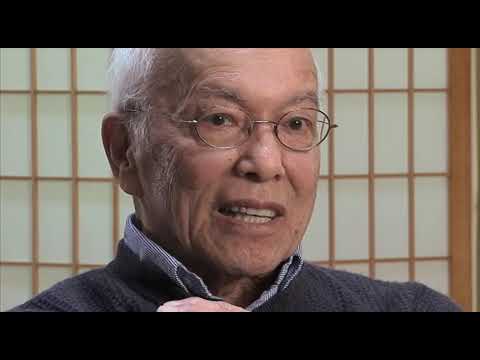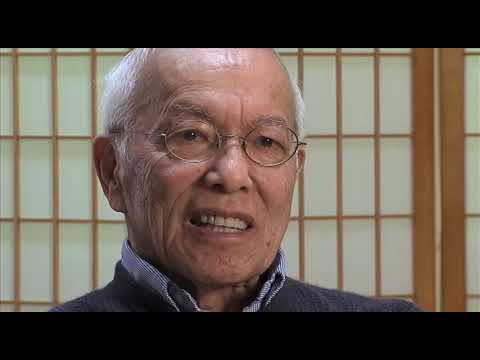Video Interview — June, 2008
Paintings by Sada of four stages of evacuation – Sada Omoto (OH0091)
Transcript
Soon after I retired, which was ten some odd years ago, I said to myself, “I want to make something that is going to be an expression of this incarceration.” And so I made a series of little paintings, one leaving the island, one coming home, one what we did in the camps, and so forth. Kind of a conglomeration of things that I experienced. I wanted to put that down before it got away from me because it’s too easy to say, “Oh, well, someone else did it.” I still have that.
It’s not going to be a great piece of art, but it’s kind of a document of what I viewed. I can remember one little image that I captured. That is… we all went on a ferry. When you board a ferry at the automobile level, that opening is huge. It makes us feel that tall. That to me suggested that our future wasn’t going to be very bright, some kind of doomsday type thing. I’m interpreting all this only because I’ve thought about these things. There’s nothing magical about what I’ve said, or information. People have been talked about these things for ages.





